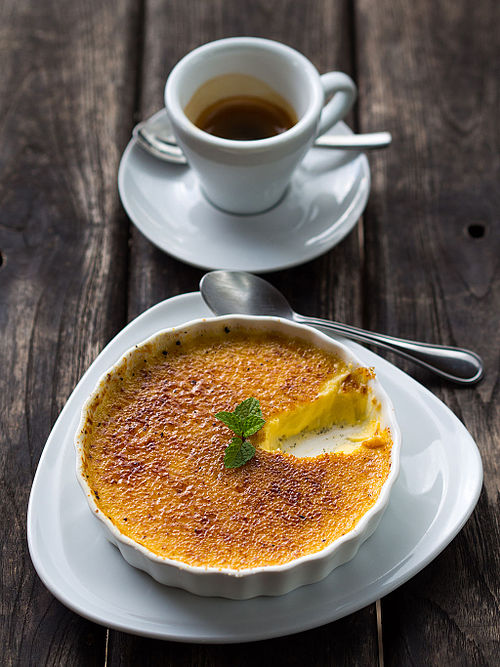
Back كرملة Arabic Caramel·lització Catalan Karamelizace Czech Karamellisieren German Καραμελοποίηση Greek Caramelización Spanish کاراملیزاسیون Persian Karamellisoituminen Finnish Caramélisation French קרמליזציה HE
Caramelization is a process of browning of sugar used extensively in cooking for the resulting rich, butter-like flavor and brown color. The brown colors are produced by three groups of polymers: caramelans (C24H36O18), caramelens (C36H50O25), and caramelins (C125H188O80). As the process occurs, volatile chemicals such as diacetyl (known for its intense butter-like taste) are released, producing the characteristic caramel flavor.[1]
Like the Maillard reaction, caramelization is a type of non-enzymatic browning. Unlike the Maillard reaction, caramelization is pyrolytic, as opposed to being a reaction with amino acids.
When caramelization involves the disaccharide sucrose, it is broken down into the monosaccharides fructose and glucose.[2]
- ^ Miller, Dennis (1998). Food Chemistry: A Laboratory Manual. Wiley-Interscience. ISBN 978-0471175438.
- ^ Woo, K. S.; Kim, H. Y.; Hwang, I. G.; Lee, S. H.; Jeong, H. S. (2015). "Characteristics of the Thermal Degradation of Glucose and Maltose Solutions". Prev Nutr Food Sci. 20 (2): 102–9. doi:10.3746/pnf.2015.20.2.102. PMC 4500512. PMID 26175997.
